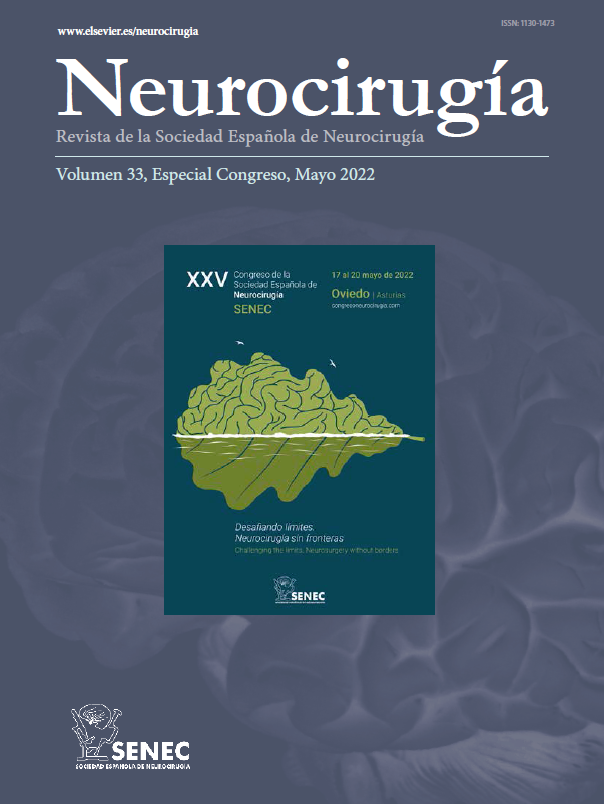P-090 - NONTRAUMATIC BASILAR ARTERY PSEUDOANEURYSM SECONDARY TO CHRONICAL COMPRESSION WITH THE CLIVUS: CASE DESCRIPTION
Hospital Universitari Doctor Josep Trueta, Girona, Spain.
Introduction: Nontraumatic intracranial pseudoaneurysm are a very rare entity with a very high mortality. The etiology of nontraumatic pseudoaneurysms is varied, but until now it has not been described as a chronic compression of the vessel against bony surfaces as an etiology. The pathophysiology of intracranial pseudoaneurysm formation describes a special characteristic because these vessels are thinner and stiffer. All of the special features make these vessels more susceptible to external insults.
Case report: A 66-year old female patient, with antecedents of colon adenocarcinoma and breast carcinoma came to the emergency room with vomits, sickness, headache, dizziness and weight loss. Initial CT and brain MRI showed a right cerebellar lesion suggestive of metastasis; The patient underwent surgery obtaining a good surgical removal of neoplasm and Pathology confirmed a breast metastasis. Post-op CT showed no immediate complications but eight days later, the patient suffered a spontaneous and fast decrease of Glasgow coma scale score that required orotracheal intubation. Emergency CT scan showed a Fisher grade IV spontaneous subarachnoid hemorrhage due to a basilar pseudoaneurysm without spot sign. The patient worsened hours later to finally die the next day.
Discussion: Pseudoaneurysm histological features are different compared to regular aneurysm because they are just contained by the adventitia or the surrounding soft tissues. Many hypothesis have been report in the literature including the use of anticoagulants, repetitive microtrauma, wall vessel damage by chronic stress and atheroesclerosis. In this way, the repetitive chronic microtrauma of the basilar artery against a hard surface like the clivus can lead to arterial wall degeneration and create this vascular lesion when the pressure to the artery releases after the removal of a posterior fossa metastasis. It is advisable to be alert to the presence of possible non-traumatic vascular damage in the postoperative period of posterior fossa surgery.







